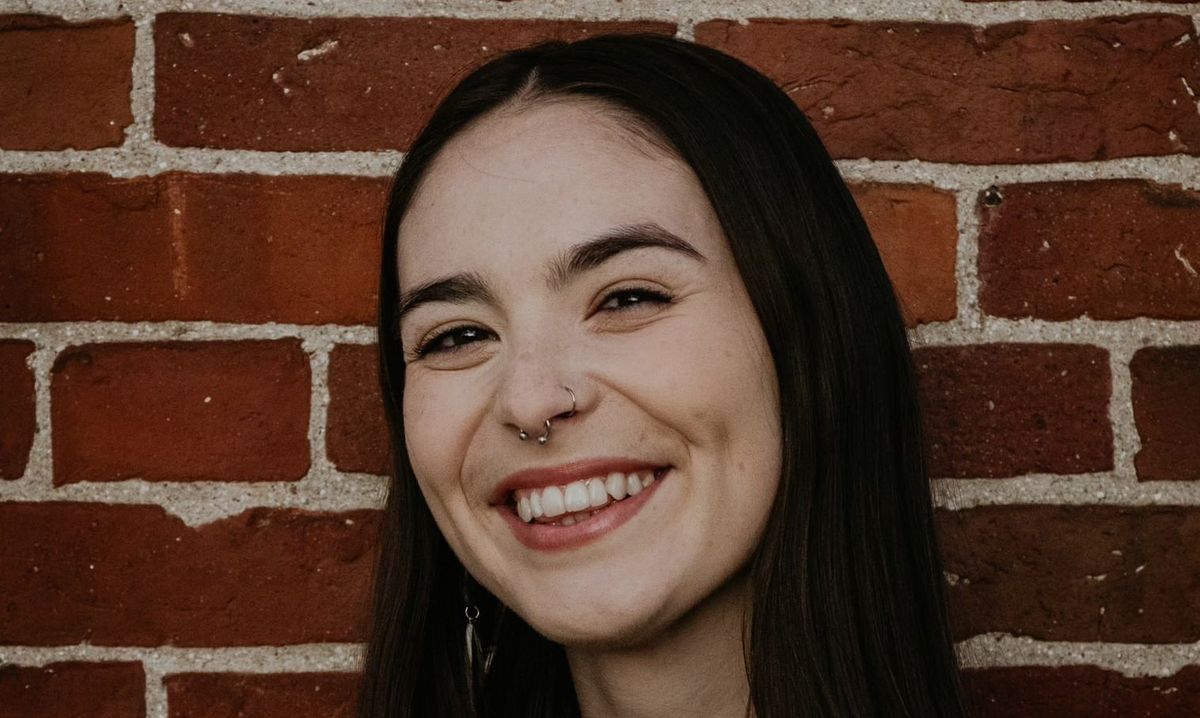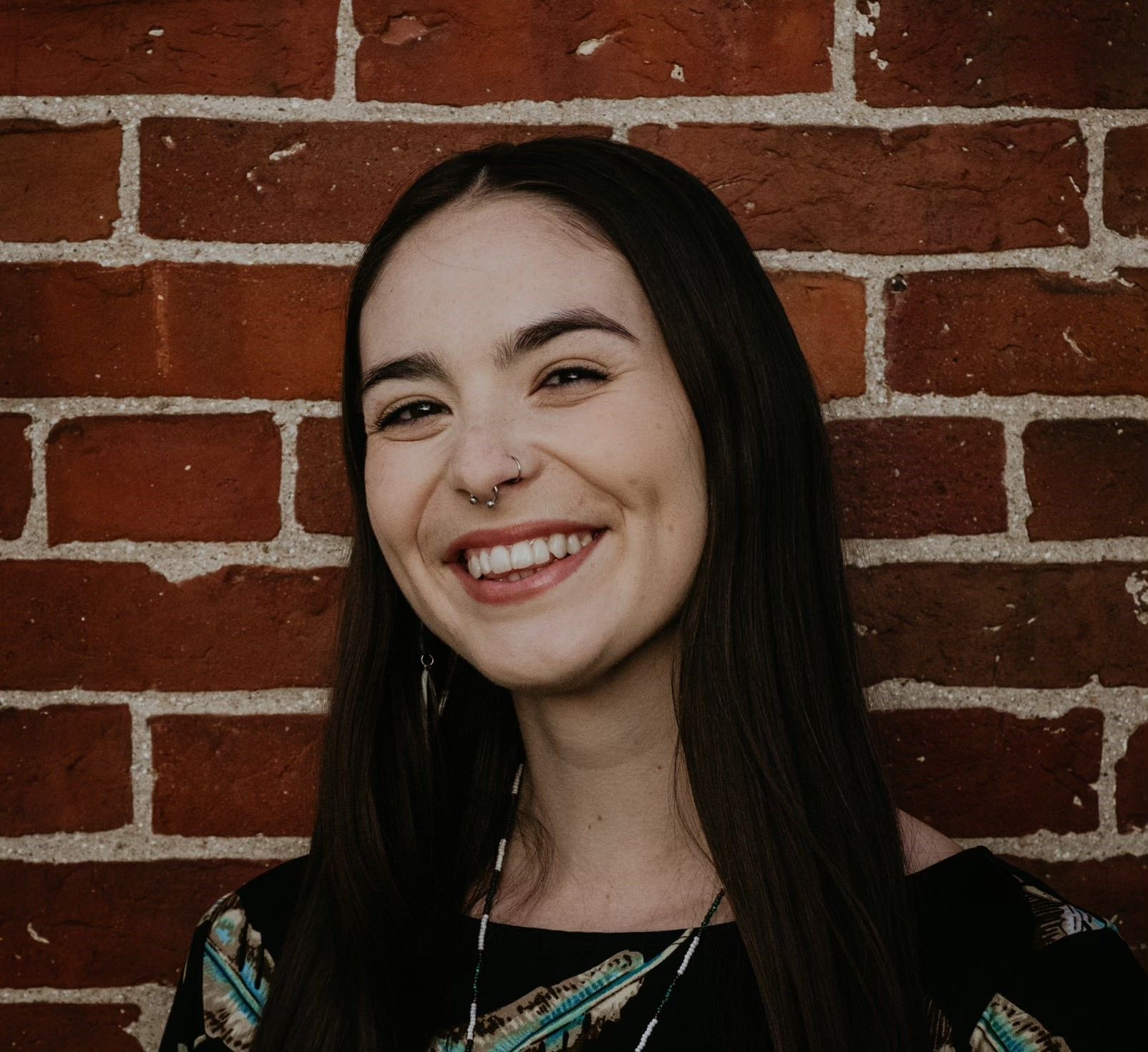Sage Innerarity: Creating Community and Championing Change
Throughout her time at Amherst, Sage Innerarity has made a name for herself through her ability to bring people together and raise the voices of others.


Community has always been important to Sage Innerarity ’22. While at Amherst, she has devoted her time to connecting with the people around her, whether through the softball team or the multitude of student clubs she’s been a part of. Innerarity is also a proud member of the Native community on campus, and has spent much of her time at Amherst learning more about her heritage and working to give a voice to her fellow Native students.
When I sat down with Innerarity, I already knew a little bit about what to expect — Innerarity is a self-proclaimed “very direct person” who isn’t afraid to call it how she sees it. However, underneath her outspoken exterior is someone who genuinely wants to help others. Innerarity has dedicated her studies and her summers to telling stories that are seldom told, and the rest of her time to serving as a rock to her friends, peers, and teammates. For all the work she’s done to amplify the voices of others, it’s time to hear hers.
Humble Beginnings
Innerarity’s journey to Amherst began almost 3,000 miles away, in the town of Elk Grove, California. About a 20-minute drive away from the state’s capital, Elk Grove is where Innerarity spent the first 18 years of her life, and it’s a community that she keeps returning to.
One of only a few Native kids in her area, Innerarity learned from a very early age that academic spaces were not always going to feel welcoming. As part of the California state history curriculum, students learn about the Gold Rush and the mission systems — two topics littered with both anti-Native action and sentiment. It was through this experience that she began to embrace and connect with her heritage. During these units, her mother and grandmother would help her with cultural presentations for her classes to help fully convey both sides of the story. “[Those presentations] really helped me find a voice,” she said. “So when I would encounter teachers who would say problematic [stuff], or just instances where I needed to be able to use my voice to stand up for myself — like, my mom had taught me how to do that.”
She credits this experience as driving her to take initiative with her education. Like many students who eventually make their way to Amherst, Innerarity was an academically focused child who was involved in many different activities. One of her main interests was performance art; she participated in theater and dance productions, school talent shows, and even a “Poetry Out Loud” contest, which she entered during her senior year of high school.
But Innerarity’s dedication to softball took up the most of her time and energy in high school. A driven and passionate player, she aimed to earn a scholarship to play at the collegiate level. “I had really, really amazing coaches and mentors, and I learned so much about myself through playing the sport,” Innerarity said.
“It Felt Like Kind of the Perfect Place”
It was this love and passion for softball that would eventually land Innerarity in Western Massachusetts, but not without adversity. Coming from California, Innerarity was primarily looking at schools closer to home, but she was unable to find one where she could play varsity softball while also receiving a top-notch education. With her love for learning, going to a school where she could be with like-minded people was a top priority. So she prioritized academics. She would do what she had been doing in school her whole life and let the rest take care of itself.
And it eventually did. After a softball tournament in San Diego, Amherst reached out to recruit her. She had never heard of the college, but after doing some digging, she was sold. “[Initially,] I was like, ‘Oh, I’ve never heard of this place,’” she said. “And then I did a little research into it. I found out, ‘Wow, this is a really good school.’ And from the outside, it was kind of the perfect place [for me] in that I would get to do athletics while also getting to prioritize [my] academics, and do all this other extracurricular stuff because there’s just so many options.”
But for Innerarity, it was her visit and the people she met that sold her on Amherst. Because of her status as a member of the Native community, she was able to take an overnight visit to the college through the college’s Native Overnight program and meet other students in the community at Amherst. She cites her desire to “be a part of growing that community” and her love for the people she met as what solidified her decision.
Finding a New Community
It was this desire for community that has guided Innerarity throughout her college career. While excelling in the classroom as an English and American studies major, she began doing what she does best — forming connections within her community. She fully extended herself: In addition to being a dedicated member of the softball team for three years, she also branched out, participating in the Sabrinas a cappella group and becoming a member of the Native and Indigenous Students Association (NISA) and the Council of Amherst Student Athletes of Color (CACSAC).
In the Sabrinas, Innerarity found a community that welcomed her with open arms. “From day one that was just such a supportive, kind, encouraging, generative space to be in,” she said. “Those are definitely friendships that will last my whole life.” In CACSAC, she found a group of like-minded people with shared experiences as people of color in athletics. And in NISA, she returned to her roots, just as she was beginning to do so in other ways as well.
In particular, Innerarity began to connect with her heritage through her academics. She had entered college knowing she wanted to major in English, but she added American studies later on when she realized her initial desire to major in math had been a mistake. And it was in American studies classes that Innerarity found her calling. She decided to complete the Five College Certificate in Native and Indigenous Studies, along with a concentration in Native studies within the American studies major. In focusing on Native studies, Innerarity reignited her passion for the topic — as demonstrated by her senior thesis on creation stories in her home community.

Activism and Education
Work on the project that would become her thesis began during quarantine, after Innerarity had applied for and received the Mellon Mays Fellowship during the spring of her sophomore year. This is also when much of her development into an advocate for others began to manifest. Lisa Brooks, Henry S. Poler ’59 presidential teaching professor of English and American studies, Innerarity’s Mellon Mays mentor and eventual thesis advisor, saw it happen firsthand. “She [became] so good at building conversation, and kind of creating a space where other people’s voices would be heard, where it was safe to speculate,” Brooks said.
This attitude didn’t just apply in the classroom — Danica Peterson ’22, one of Innerarity’s closest friends, echoed Brooks’ sentiments. “Everyone in her life knows her room is an open and safe space for them to be,” she said. “She also has a lot of courage and passion, and will always stand up for what’s right.”
It was in her thesis research that her knack for both creating community and advocating for others met with Innerarity’s academic interests. During the summers of 2020 and 2021, Innerarity used the stipend she received from Mellon Mays to fund her research with Brooks on Indigenous stories in her own home community, conducting a series of interviews with Native Elders in Sacramento. This work, telling those underrepresented stories, gave her a new perspective. “It really solidified for me the importance of storytelling and the importance of using my place at Amherst to do that [community-strengthening] work,” she said.
This work also bled over into her extracurriculars. Innerarity got more involved in NISA, becoming co-president and working to improve the resources available to Native students and expand their role on campus. Some of her biggest projects have included running Amherst’s first Orange Shirt Day Fundraiser to commemorate the legacy of the residential school system on Indigenous peoples, and laying the groundwork for the planting of a medicine garden for Native students on campus. She was also part of the group of CACSAC upperclassmen that pushed for and participated in the club’s walkout this past October, which aimed to change administrative practices in the athletic department, specifically making them transparent, diverse, and socio-economically inclusive earlier this year. All of their demands were met.
In March, due to an abusive coaching situation, Innerarity made the difficult decision to step away from the softball team after spending three years as a core member. But rather than simply accepting the situation, she became an advocate, organizing a full-team strike that led to the coach being put on leave and an investigation into her behavior being opened. Despite these incidents having an impact on her softball experience and her passion for the sport wavering as a result, Innerarity doesn’t regret any of it. “Quite honestly I don’t think that I would be the person that I am now if I hadn’t played [softball],” she said. “I think it made me so much braver and so much more. A better friend, a better teammate, a better community member.”
Going Home, Giving Back
Innerarity’s community work won’t stop with graduation. She plans to continue the research she started with her thesis this summer, using the information she gathers and the experience she gains to go back to the roots of her advocacy work. Remember those cultural presentations from elementary school? Innerarity plans to take a gap year to create companion curricula like the ones she and her family taught to her classes 10 years ago. Afterward, she plans to apply to graduate school, and get a Ph.D. in either English or American studies, with the goal of eventually becoming a professor and giving back to the community that provided so much to her by educating others on Native stories.
For all that she has done to shape the Amherst community over the past four year, Innerarity will be missed. Brooks said it best: “[She’s] played a leadership role in really making Native people visible on the campus, but also creating a space of belonging, which has been just extraordinary. We’re all going to miss Sage a lot … because of that leadership role that she’s played, and because of the community that she’s helped to create.”


Comments ()